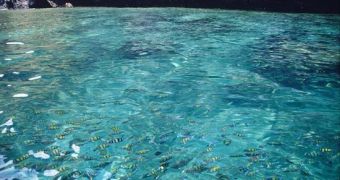“God's bathtub” has allegedly been found by researchers in Australia. The “bathtub” is said to contain water that has somehow remained untouched by climate change or other human activities, hence the fact that it strikes people as stunningly clear and pristine.
Before anyone gets confused, it need be said that this body of water is by no means a bathtub, but a lake. The researchers who found it nicknamed it God's bathtub after being taken aback by its clarity.
Those who have seen the lake claim that one can have a look at its bottom despite the fact that the lake is roughly 10 meters (about 32 feet) deep.
“It's like God's bathtub. It is beautiful. It is absolutely beautiful,” a researcher said, as cited by The Examiner.
The newly discovered body of water also got a more official name: the Blue Lake.
Judging by its clarity, specialists suspect that the chemical make-up of the water forming this lake is roughly the same as it was about 7 millennia ago, when the lake is presumed to have formed.
“Researchers at the University of Adelaide have found that a lake on an island off the coast of Queensland has been relatively untouched by changes in climate for the past 7000 years, and has so far also resisted the impact of humans,” reads the official website for the University of Adelaide.
Apparently, the lake has only managed to remain this pure as the millennia went by because it constantly refreshes its waters.
Thus, God's bathtub drains its waters into a swamp, and then refreshes itself by taking in fresh water from an aquifer.
“It appears that Blue Lake has been an important climate 'refuge' for the freshwater biota of the region, and is in the same condition now as it was 7500 years ago.”
“With appropriate management, the lake could continue relatively unchanged for hundreds, possibly thousands of years to come,” Dr. Cameron Barr explained.
A paper detailing the discovery of this lake and its chemical make-up is made available to the public in the journal Freshwater Biology.

 14 DAY TRIAL //
14 DAY TRIAL //